How to Manufacture, Label, and Ship Food Products Like a Pro
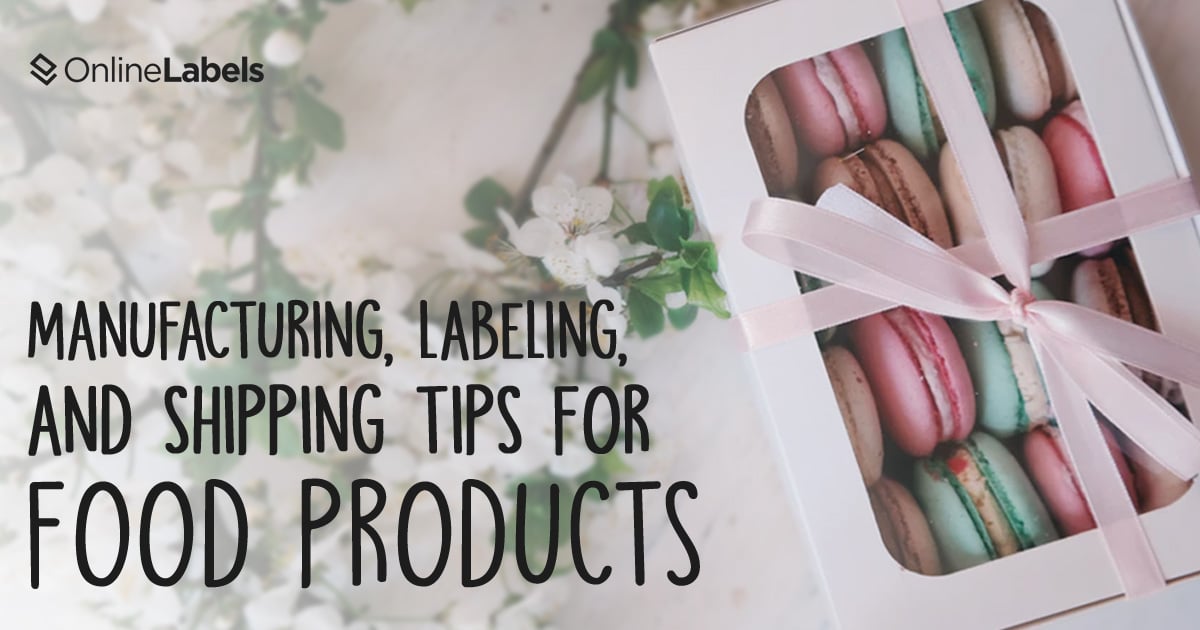
Once you mastered the recipe for your handmade goods, you're ready to make some money. Your website is set up, your packaging is designed and ready to go, but you're worried about properly manufacturing, labeling, and shipping your delectable creation to customers.
Have no fear, food artists. We've got everything you need to know about selling and shipping perishable products.
Legally Manufacturing Food & Drink Products
If you're running a food-based business out of your home, it's important that you're complying with all of the rules and regulations.
"The rules and laws vary greatly from state to state, and from type of food business," says Damian Roberti, owner of The Brittle Box Candy Co. and founder of Marketing Food Online. "These laws not only govern the sale and production of food at home, but the venues where to sell them."
Knowing that, here are a few quick steps to get started.
1. See If Your Products Are Regulated
In regard to home-based food businesses, the FDA regulates the following food items:
- Dietary supplements
- Bottled water
- Food additives
- Infant formulas
- Food products (alongside the U.S. Department of Agriculture, which plays a lead role in regulating aspects of some meat, poultry, and egg products)
The FDA also regulated the following veterinary products:
- Livestock feeds
- Pet foods
- Veterinary drugs and devices
2. Classify Your Kitchen
You need to determine if your house qualifies as a facility. In some cases, home-based food business are exempt from certain FDA regulations. An example of an exemption would be if you are not entering into interstate commerce (selling your product outside of your state). In that instance, you may not have to register as a facility.
If you're importing food products, conducting internet sales, and/or shipping food products outside of your state, though, you will have to register.
3. Research State & Local Regulations
Local and county health agencies typically inspect food establishments, provide technical assistance to food facilities, and educate consumers about food safety. You'll also need to comply with regulations set forth by your state and local health department agencies as well.
Understanding who to reach out to with specific questions can be key. These channels can help you identify what state and local regulations you must meet to be FDA-compliant in your area:
- The FDA district office. Here, you can stay informed about recalls and other safety issues and locate contact information for specific staff members.
- State and local regulatory agencies. On this site, you can find a directory broken down by state so you can locate the proper information for your area.
4. Check for Exceptions
"It's important to note that some rules don't apply to startups," says Roberti. "Various states have what are called Cottage Food Laws, which offer exemptions to home-based food creators who meet certain criteria. Exemptions can include needing a commercial-grade kitchen or providing a nutritional analysis on the product."
Labeling Food Products According to FDA Requirements
One of the most important aspects of any food-based business is the label. Your food packaging must cover a certain set of information for it to be deemed "compliant." Without this clearance, you could lose the ability to sell your items.
With all the federal labeling regulations to abide by, this process can be scary to many entrepreneurs. Navigating the FDA website and applying their rules to your specific product/scenario isn't easy, so we've done all the hard research for you.
Below, we've outlined five of the most critical elements your food product label must contain.
1. Statement of Identity
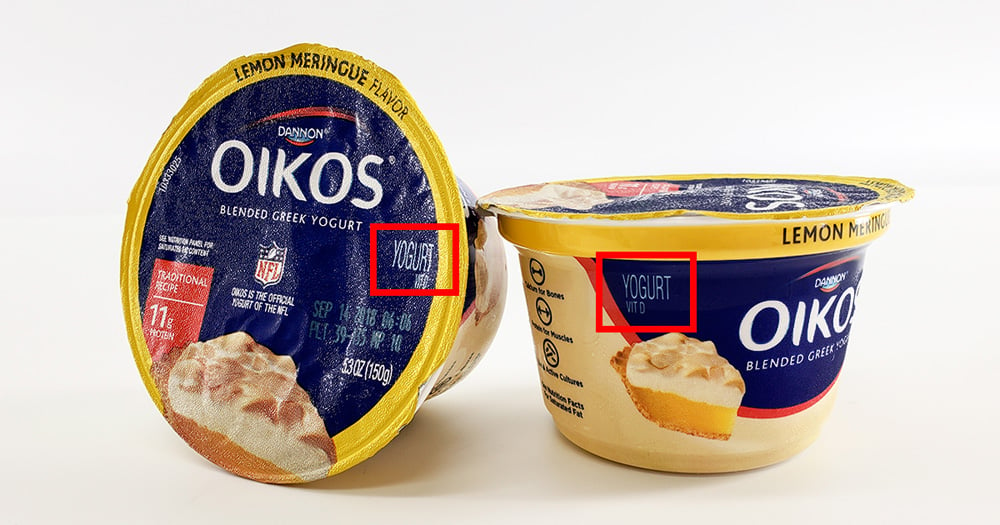
This tells the consumer what they're buying. You're free to name your product something fun or fanciful, but to be FDA-compliant, you must also list the standard/common name of your product.
In other words, no matter what you name your homemade chocolate chip cookies, it has to say 'chocolate chip cookies' on the label as well. If it's not a common food (i.e. it's something you created), try to describe the product as best you can.
Graphic requirements: In addition to listing the standardized food name, the FDA requires that it's at least half the size of the largest text on your label (or larger, depending on the context), written in bold text, and featured prominently on the front panel.
2. Net Weight or Contents Statement
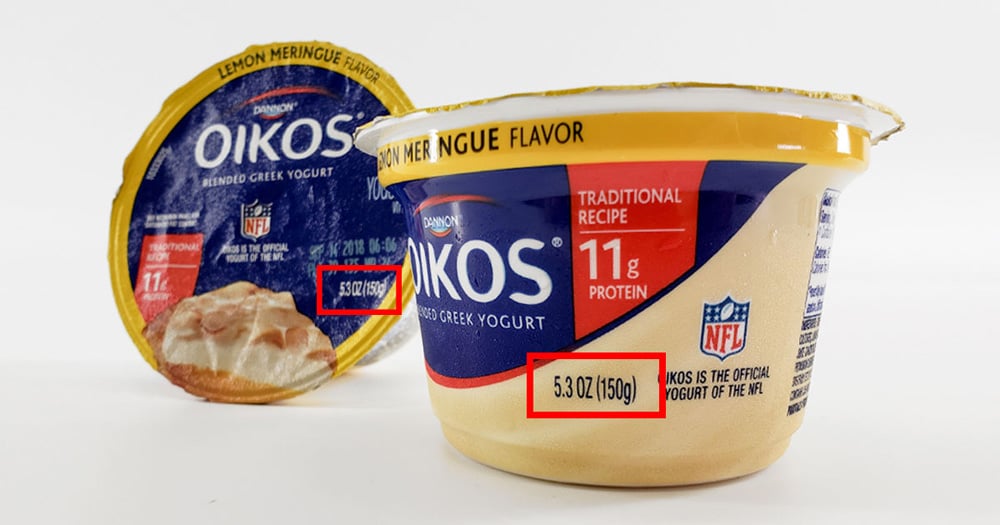
The net quantity of contents is the weight, measure, or numerical count of your product. It can also be expressed in combination, specifically as the numerical count and the weight or the numerical count and the measure.
Graphic requirements: Your net content statement must be in bold text, included in the bottom 30% of the front of your label, have plenty of surrounding free space, and run parallel to the base of your packaging.
- NET WT 12 OZ (340g)
- NET WT 24 OZ (1 LB 8 OZ) 680g
- NET 8 FL OZ (237mL)
3. Nutrition Facts Panel
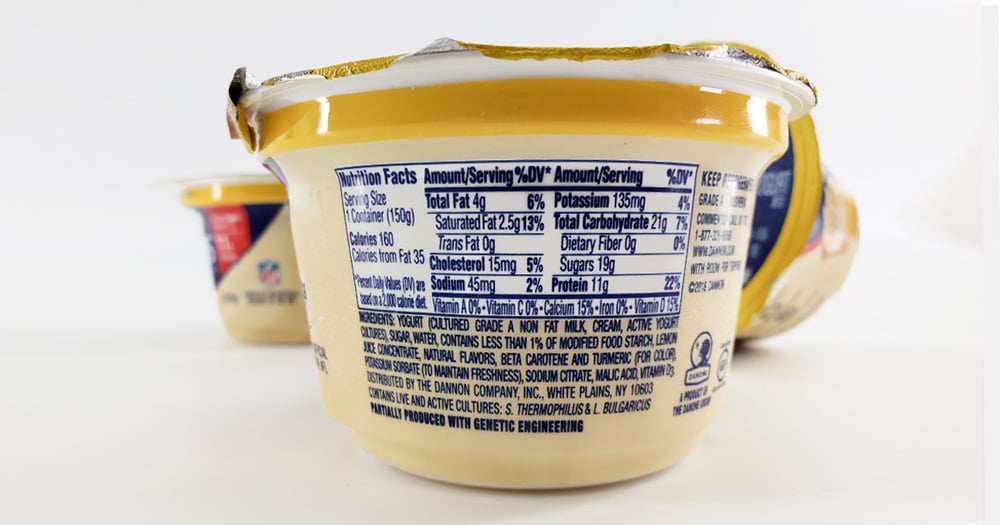
This includes the nutrition information for your product. Most edible products require nutrition fact labels on the packaging, however, small businesses that meet a specific list of criteria are exempt from such requirements (discussed in the Exceptions section below as well).
Getting this info is probably one of the most stressful parts for most food creators, but it doesn't have to be. If your product needs a nutrition fact panel, find out how to get your nutrition information. There are a number of organizations that provide nutritional analysis and/or offer regulatory support.
Once you know the details, use our nutrition label generator to create the panel.
Graphic requirements: The nutrition fact label can be placed in whatever layout/orientation is best for your packaging. This can include vertical, side-by-side, horizontal, or linear.
Based on space and size limitations, you may opt for the full format nutrition label or a simplified version. Regardless of which format you select, the formatting of both the text and table is a very specific element that must be followed.
4. Ingredients List
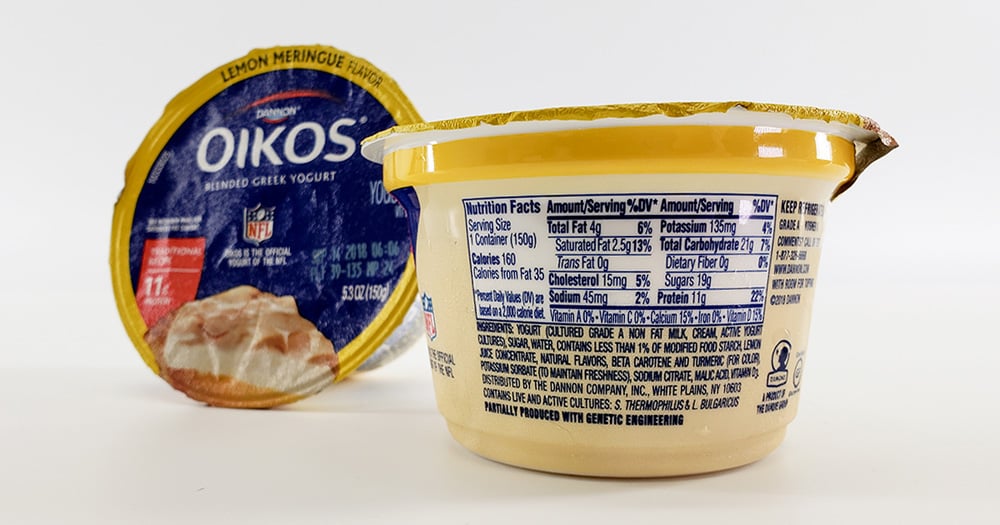
For the safety of consumers, food manufacturers must list all ingredients used to create their product.
Of course, there are several exceptions to this requirement. For example, if you're selling something that's just one ingredient – like nuts or honey – there's no need to list ingredients on the label. But if you've added seasoning to the nuts or sweeteners to the honey, it would be necessary to include ingredients on the label.
This includes the sub-ingredients used as well. If you're listing ketchup as an ingredient, you must also declare the ingredients used in the creation of the ketchup.
You will also need to list any allergen statements in this section. There are eight foods believed to account for 90% of all U.S. food allergies (milk, egg, fish, Crustacean shellfish, tree nuts, wheat, peanuts, and soybeans). If your product contains one of those leading allergens, the specific allergen must be identified in the ingredients list or directly beneath the ingredients list in a 'Contains:' statement.
Graphic requirements: All ingredient statements must be listed in descending order of predominance by weight. This means the heaviest ingredients should be listed first.
Any allergen statements must be given the same prominence in comparison, or more. The ingredient statement must be placed immediately beneath or contiguous and to the right of the nutrition facts panel.
5. Name & Address
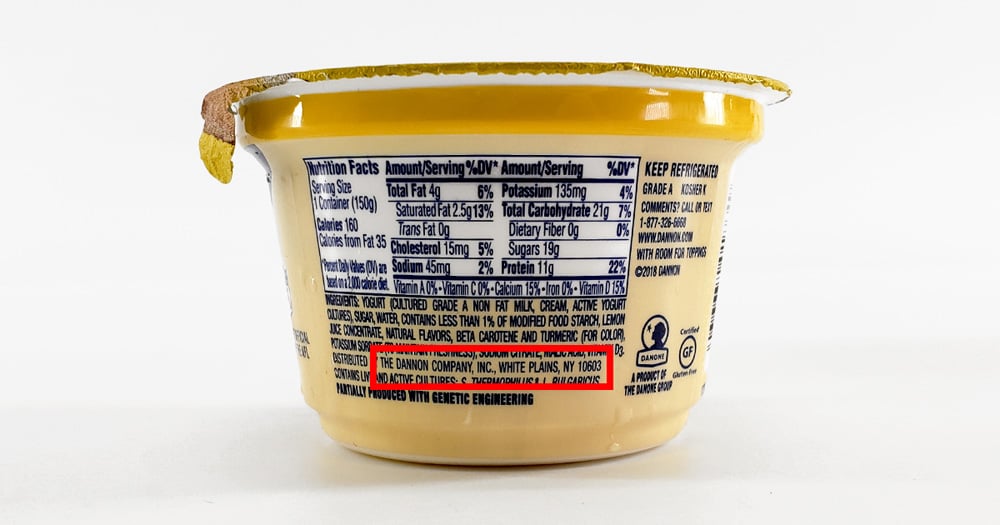
Food labels must provide consumers with the location of the business, whether you are the manufacturer or distributor. This "signature" as it has come to be known in the industry, is your standard mailing address: business name, street address, city, state/province, and ZIP.
If you plan to list an address other than that of the manufacturer, a clarifying statement must precede it (distributed by, imported by, etc.).
Graphic requirements: This information must be located in a conspicuous place on the label together with the other mandatory information and follow the same prominence requirements as the ingredient/allergen statements.
Other
If you're shipping your item using Amazon FBA, you're required to list an expiration date on the box and on each individual unit. This differs between states and organizations so double check your state's laws and any marketplace requirements to ensure your packaging meets each one's individual requirements.
Designing Your Food Label
Like the branding of any other product, food should make people feel a certain way (before they have the opportunity to taste it).
Ask yourself, "How do I want my customers to feel about purchasing MY popcorn, versus the popcorn from my competitor?" Are you going for a modern-retro vibe or an organic-hipster feel?
Determining this is the fun part, and the options are endless ... and so is the variety of professional-quality food and drink labels!
Packaging Food for Shipment
You want customers to get excited when your package arrives. Follow these tips to help generate positive reactions from customers.
Internal Packaging
Not every food item is shipped the same. But no matter the product, Roberti suggests always using ice packs (especially in the summertime).
External Packaging
Once the internal packaging is squared away, you may consider using adhesive labels versus the print-cut-and-tape method. Whether you're selling through your website and using the standard carriers or using online marketplaces like Etsy or eBay, you can find shipping labels at OnlineLabels.com for:
- UPS WorldShip and UPS Internet Shipping
- USPS Priority Mail and Click-N-Ship
- FedEx Ship Manager and Ship Manager Lite
- eBay and PayPal
- Etsy
- Amazon FBA
He also recommends fragile labels if you're shipping something that may break – like chocolate-covered pretzel sticks. This is especially worth considering if you plan to ship large quantities to companies/supermarkets for resale.
Remember, your business' branding is the first impression your customers get, and packaging/labeling plays a large role in that. Switching from the computer paper, cut-and-tape method to professional shipping labels can really up your game when it comes to first impressions.
Shipping Method
Roberti stands behind two-day priority shipping for his business. He's found two-day priority service to be the most cost effective, in conjunction with free boxes from USPS.
Learn more about each shipping carrier and find the right labels for each. You may also want to explore shipping insurance to protect your goods in transit.
Dietary and Food Restriction Labels
Customers should be informed of food products' dietary and food restrictions, especially if they contain gluten, dairy, lactose, etc. Clear labeling helps those with allergies and intolerances avoid adverse reactions and empowers consumers to make informed choices that align with their health needs and dietary preferences.
Whether managing celiac disease or following a vegan lifestyle, transparency in food labeling ensures that customers can trust the products they purchase and consume. Implementing these labels reflects your company's commitment to health and safety standards.
Some of the categories that you can include in your products are:
Vegetarian Labels
They are designed for food products, indicating they do not contain meat, chicken, seafood, etc. Some of the products that may contain this type of labels are:
- Meat alternatives: tofu, textured vegetable protein (TVP), veggie burgers, etc.
- Dairy products: cheese, milk, butter, etc.
- Egg products: eggs, egg replacers.
- Packaged snacks: hummus, veggie chips, granola bars, etc.
- Canned and jarred goods: canned beans, tomato sauce, fruit preserves, etc.
Gluten-Free Labels
Food products can contain these labels indicating that they do not contain gluten. Products that may feature this label include:
- Grains and flour alternatives: gluten-free rice, gluten-free quinoa, gluten-free buckwheat, almond flour, etc.
- Baked goods: gluten-free bread, gluten-free cookies, cakes, and more.
- Snacks: gluten-free crackers, rice cakes, popcorn, etc.
- Pasta and noodles: rice noodles, quinoa pasta, corn pasta, etc.
Dairy-Free Labels
Dairy-free labels are designations on food products that do not contain milk or milk-derived ingredients. Products that may contain this label are:
- Dairy alternatives: almond milk, soy milk, oat milk, rice milk, etc.
- Cheese alternatives: nut-based cheeses, soy cheese, coconut cheese, tapioca cheese, etc.
- Butter alternatives: margarine, coconut oil, avocado oil spread, etc.
- Ice cream alternatives: coconut milk ice cream, almond milk ice cream, soy milk ice cream, etc.
- Baked goods: dairy-free bread, dairy-free cookies, dairy-free cakes, etc.
Vegan Labels
This category can overlap with vegetarian products. Vegan labels should be placed on products with no ingredients derived from animals or tested on animals. A vegan label may be used if a vegetarian product also falls into this category.
Some products that can feature these labels include:
- Dairy alternatives: plant-based yogurt, coconut milk, soy milk, etc.
- Meat alternatives: jackfruit, plant-based meat, etc.
- Vegan ice cream alternatives: coconut milk ice cream, almond milk ice cream, etc.
While the above guidelines are mainly the basics of creating, labeling, packing, and shipping food, keeping up with local, state, and national regulations is essential to running a successful food-based business. There's a lot to consider, but don't let it overwhelm you.
Start by making a list of what you need to include on your packaging according the each level of regulations. Once you do that, it's time to start shipping!
Looking for more information about food labeling? Hear more from Damian Roberti on how to start a food business. We also touch on making GMO-free claims and using food safety seals.
Ready to upgrade to specialty labels for your food products? Shop premium label solutions for enterprises, or fill out the form at the bottom of this article.
This article was written with the assistance of Carter Regulatory Group. Carter Regulatory Group is a regulatory affairs consulting firm in the food and beverage, cosmetic, dietary supplement, and OTC drug fields. It provides affordable, practical regulatory solutions for multiple markets both domestically and internationally. Contact Brent at brent@carterregulatorygroup.com or 801-425-8096 to get started.
This article is meant to be used as a labeling guide, it is not an authoritative resource on the latest FDA regulation. At the time of publication (August 2018), the information mentioned above is compliant with state and federal laws. Please be sure to check government databases for updates or revisions as regulations can change frequently. We are not responsible or liable for any actions taken as a result of using the content or resources listed above.



